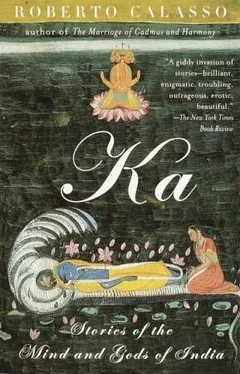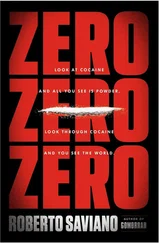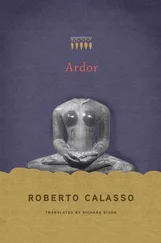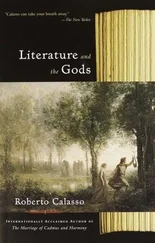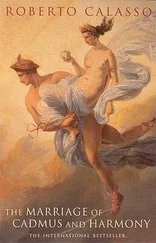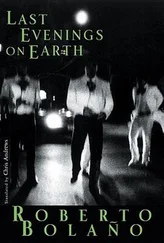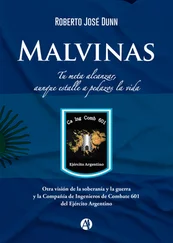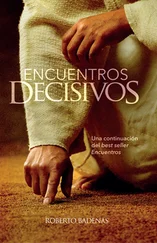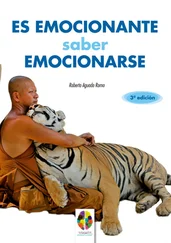It wasn’t a sight to be proud of, Uṣas’s flight, as trembling and terrified she stumbled over her embroidered robes while Indra’s lightning split her chariot. And the rabble of men whose bigoted blah-blah had egged Indra on looked at once laughable and dire. Thus was established the model of all moral zeal. Later to receive its official seal in Upper Iran, cradle of the Āryas, in the place and in the language, Avestic, where for the first time they sought to split the cosmos in two, dividing it up into Good Creation and Bad Creation. Upon which the beautiful and heedless Uṣas was transformed into an evil demon they called Bušyanstā, she who says to men: “Not yet, not yet.” For centuries afterward poet upon poet would evoke the “rosy-fingered” Dawn. They forgot that the girl had suffered persecution at the hands of gods and men. She was the first to meet that fate henceforth reserved for beautiful women: beatings and banishment.
“Indra’s quarrel with Uṣas. A strange myth. No motive is ever suggested,” remarks a puzzled Geldner in a note on the only Vedic hymn in which Indra’s attack on Uṣas’s chariot is briefly described. “A mythical element which only appears outside of the hymns to Uṣas, and always abruptly, unexpectedly, like an errutic block, such is the image of Indra splitting Uṣas’s chariot,” remarks a puzzled Renou. Why on earth should Indra, the liberator, attack Uṣas, whom he had liberated? What respect did he hope to gain among men with that cowardly, incongruous deed? There was a dark story, behind it all, which no one has told. Dark as Dawn. “Which is the dark face of Dawn?” asked Ānanda K. Coomaraswamy, in the manner of the ṛṣis . And the answer could hardly be other than dark, imperceptible as the blinking of an eyelid.
Bespattered with the blood and seed of the Father, no sooner was she separated from him than Uṣas fled south, “like an outcast.” As she ran she sobbed: “All my seductions have come to naught.” Words no one paid any attention to. The eyes of the gods were fixed on the Archer and the dying Father, who were about to speak to each other. At this point Uṣas was no longer the Dawn of exalted hymns, resounding each morning in the mouths of men who, freshly awakened, called on Uṣas to waken them. She was just an antelope running off into the woods, waiting for the hunter who would shoot her down.
The antelope was the first being to be wounded, when Rudra’s arrow buried itself in Prajāpati’s groin. So it was also the first being to be hunted and sacrificed. There was a knowledge of the gods — and a knowledge of the sacrificers. A knowledge of the Archer and a knowledge of the witnesses. The wheel of time would go on turning to the point where the last, and hitherto mute, knowledge would speak: that of the victim. The target stood erect, alone. The Bodhisattva was the victim who freed himself from the sacrificial stake. Where did he run to? Toward the awakening. That was the target that spills blood no more. That was the goal of Siddhārtha, “He who has reached the goal.”
“Where the black antelope ranges by nature, that should be known as the country fit for sacrifices; and beyond it is the country of the barbarians,” say the Laws of Manu. Antelope: the prey par excellence, of hunter and predator. At a certain point in their history, it occurred to men that they might climb up a level, might increase their powers, if they were to imitate those they had always fled from: the predators. Thus, having long thought of themselves as antelopes, men began to kill antelopes, to hunt them. The antelope was the first being in whose regard they felt guilty: killing the antelope, they were killing themselves, as once they had been. The whole forbidding structure of Vedic sacrifice is founded on the recognition of that guilt and it is dedicated as much to the antelope as to the gods. They thought of the antelope as an animal that could not be sacrificed, yet sacrifice had meaning only in relation to the antelope. Unless the skin of a black antelope was laid out on the ground, there could be no sacrifice. The sacrifice rested on that skin, on the side of the fur: the black hairs were the Vedic meters. And those undergoing initiation, the dīkṣitas , would gird their loins with a black antelope skin, as if at every moment to recall, indeed to absorb through their pores, something of the substance of that being whose wanderings and flight marked out the borders of the territory where sacrifice took place — civilization — beyond which lay an unknown land, merely wild, that hemmed it in on every side.
One day Uṣas became the Buddha. The powers of the world — the desire and the wound — come to a stop there where all that is left of the antelope is a hoofprint. The Buddha remembered as much when he came to Sārnāth, drawn by an episode from one of his earlier lives. The king of Vārāṇasī hunted a great many antelopes in his park. Many died in ditches where the vultures and jackals devoured them. The king of the stags made a pact with the king of Vārāṇasī. Every day he would hand over one antelope, who would be chosen by drawing lots. One day the lot fell on a pregnant antelope. No one was willing to take her place. Then the Bodhisattva, who was an antelope, offered to take her place and went to show himself to the cooks. The knife fell from the cook’s hand. On seeing what had happened, the king of Vārāṇasī granted all the antelopes their freedom. Instead of being called Antelope Park, his park became Grace-Done-to-Antelopes.
If the Buddha is he who leads toward awakening, his Vedic precursor was the young woman who comes forward, “like a girl without a brother who walks toward the men,” visible from afar: Uṣas, sovereign of awakening. Before it became a noun, bodhi , the “awakening,” which was Buddha’s revelation — and which the fainthearted translate as “illumination”—was actually an imperative—“Awaken!”—issued from the lips of Uṣas. But there was a duplicity about Uṣas that enchanted men and distressed them. The Buddha wanted to put an end to it. And this, not the awakening, was the novelty of his doctrine. “Awakening,” the word that describes the act that is peculiar to Uṣas, can be said in two ways, which alternate constantly in the hymns addressed to her: bodháyantī, jaráyantī . But a second meaning lurks in jaráyantī : “making one grow old.” With awakening, with that which brings things into existence, comes time, which makes them disappear. What brings to existence and what causes to disappear, the two impalpable powers, which precede all others, to which all others return, appeared together, every morning, in the form of she who is “the most beautiful of all,” and behind whom one might glimpse a never-ending procession of copies, all equally beautiful. And, alongside, countless faces watching them: the dead, the unborn. “The mortals who saw the first Dawn shine forth have departed. Now she lets us gaze upon her. And behold the approach of those who shall see her in times to come.”
Horror-struck, Uṣas fled south — and no one paid any attention. She was an antelope hurrying back to hide in the forest. But she knew that the forest was still part of the scene. As she ran, a gesture of defiance began to take shape within. To exit from the scene. To find a place where Prajāpati’s embrace and Rudra’s arrow could never reach her. But how was such a thing conceivable? No one saw Uṣas when, on reaching the horizon, she pressed on into the sky. For a long time she kept on running across dark plains. Occasionally she recognized rivers and animals to each side. She passed the Kṛttikās, the wet and glistening Pleiades. But already she knew where she was going to stop: further on, in the light of Aldebaran, of Rohinī, she too an antelope, she too a dawn. Copper-Hair returned to Copper-Hair.
Читать дальше
